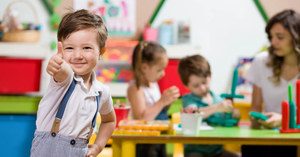Social exclusion and relational aggression represent some of the most insidious forms of bullying. Unlike physical or overt verbal attacks, these behaviors operate in the social and emotional realm, subtly undermining a child's self-worth and social standing. This article explores the definitions, manifestations, psychological impacts, and intervention strategies related to social exclusion and relational aggression.
Defining Social Exclusion
Social exclusion involves deliberately isolating or ignoring an individual from a group or activity. This can occur in various settings, including classrooms, playgrounds, or online communities. Key aspects include:
- Intentional Isolation: Excluding a peer from group activities or social circles, which can lead to feelings of rejection.
- Undermining Social Identity: Persistent exclusion can erode a child’s sense of belonging and identity, making them feel invisible or unworthy.
- Subtle Tactics: Unlike overt bullying, social exclusion may be masked as “not being invited” or “being left out,” making it difficult for adults to identify.
Understanding Relational Aggression
Relational aggression is a form of aggression that harms others through the manipulation of social relationships. Rather than using physical force, perpetrators use tactics that damage reputation, status, or the quality of interpersonal relationships. Common behaviors include:
- Spreading Rumors: Deliberately sharing false or harmful information to tarnish someone’s reputation.
- Intentional Exclusion: Deliberately isolating someone from a group or activity.
- Manipulative Behaviors: Using social influence or peer pressure to control, manipulate, or shame an individual.
- Public Humiliation: Engaging in behaviors designed to embarrass or demean a person in front of their peers.
Overlapping Dynamics
Social exclusion and relational aggression often overlap. In many cases, relational aggression manifests through acts of social exclusion. Both forms of bullying aim to control social dynamics and can have a cumulative impact on the victim. The subtle nature of these behaviors often makes them hard to detect, and they may be dismissed as typical “kids being kids” when, in reality, they can cause deep-seated emotional scars.
Manifestations in Childhood and Adolescence
In school settings, relational aggression and social exclusion can take on several forms:
- Cliques and In-Groups: Children may form exclusive groups that deliberately reject or marginalize peers based on perceived differences.
- Exclusion from Activities: A child may be repeatedly left out of group assignments, play, or extracurricular activities.
- Digital Exclusion: With the rise of social media, exclusion can also occur online—such as being left out of group chats or not being tagged in posts—which can intensify feelings of isolation.
Psychological and Emotional Impacts
The emotional toll of social exclusion and relational aggression can be significant:
- Low Self-Esteem: Repeated social rejection can undermine a child’s self-image, leading to chronic feelings of inadequacy.
- Anxiety and Depression: Victims are more likely to experience symptoms of anxiety and depression, as the lack of social support intensifies feelings of loneliness and despair.
- Social Withdrawal: The pain of exclusion often leads children to withdraw from social interactions, further isolating them and depriving them of valuable peer support.
- Long-Term Effects: Research has shown that early experiences with relational aggression can affect mental health well into adulthood, influencing personal relationships and career success.
Academic and Social Implications
The consequences of relational aggression and social exclusion are not limited to emotional well-being; they extend into academic and social realms:
- Academic Performance: The stress and anxiety caused by social exclusion can lead to a decline in academic performance, as affected students may find it difficult to concentrate or participate in class.
- Interpersonal Skills: Repeated exclusion and manipulation hinder the development of healthy social skills. Victims might struggle with trust and forming positive relationships later in life.
- Group Dynamics: In classroom settings, persistent relational aggression can create a toxic environment that disrupts learning and fosters a culture of exclusion.
Strategies for Prevention and Intervention
Addressing social exclusion and relational aggression requires a multi-pronged approach that involves parents, educators, and the broader community:
For Educators
- Implement Inclusive Policies: Establish clear guidelines and anti-bullying policies that specifically address social exclusion and relational aggression.
- Promote Cooperative Learning: Encourage group activities that emphasize teamwork and mutual respect. Cooperative learning strategies can help break down cliques and foster a more inclusive classroom environment.
- Training and Awareness: Provide training for teachers and school staff to recognize subtle signs of relational aggression. Early detection is crucial for timely intervention.
For Parents
- Foster Open Communication: Create a safe environment at home where your child feels comfortable discussing their social experiences. Ask open-ended questions about their day and friendships.
- Encourage Healthy Relationships: Teach children the value of empathy, respect, and inclusivity. Role-playing scenarios can help them develop strategies to deal with exclusion.
- Monitor Social Interactions: Keep an eye on your child’s social media and peer interactions. Digital exclusion can be as harmful as in-person rejection, so awareness of online behavior is critical.
For the Community
- Peer-Led Initiatives: Support programs that empower students to lead anti-bullying initiatives. Peer mentoring and support groups can create a positive culture where every child feels valued.
- Counseling Services: Ensure that students have access to counseling services to help them cope with the emotional impact of exclusion and relational aggression. Professional guidance can provide tools for resilience and recovery.
Conclusion
Social exclusion and relational aggression are subtle yet powerful forms of bullying that target the core of a child’s social identity. Their effects extend beyond immediate emotional distress, potentially influencing academic performance, interpersonal skills, and long-term mental health. Recognizing these behaviors and intervening early with comprehensive strategies is essential. By fostering an environment of inclusion, empathy, and open communication, parents, educators, and communities can work together to mitigate the harmful impacts of these hidden forms of aggression and support the healthy development of all children.








Be the first one to comment on this story.